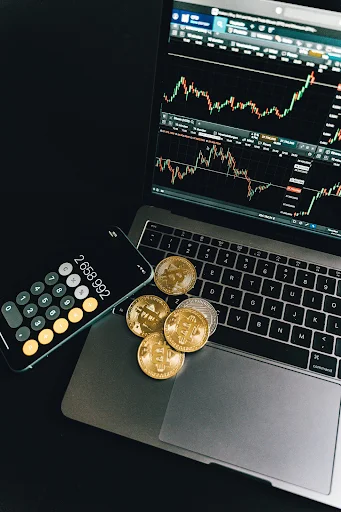Most stories about crypto start with the rush: people swapping dinner money for coins and watching lines on a chart move like a storm tide. But long before the adrenaline hits, there’s a quieter, duller task everyone skips until it’s too late: picking where to trade. Finding a secure platform that you can trust to hold your money, such as Binance.
And for all the noise, that part isn’t new. It’s as old as banking itself—choosing between the counter with polished marble and the one propped up by plywood. In crypto, the counter’s digital, but the questions matter just as much.
Dive deeper with this handpicked related read just for you.
1. Reputation isn’t marketing
The first step sounds obvious: look at who’s running the shop. But in crypto, the lines blur fast. Flashy logos and celebrity endorsements mean nothing if the company behind them is a shell. What matters is history: how long the exchange has operated, how it’s handled crises, and how openly it communicates.
A reputable exchange like Binance didn’t appear overnight; it built credibility over years by surviving hacks, volatility, and public scrutiny. You’re not looking for perfection; you’re looking for scars and how they healed.
2. Regulation: love it or hate it, it matters
Some traders talk about regulation as if it were a swear word. But the fact is, exchanges that comply with financial laws—registering, reporting, and following know-your-customer (KYC) rules—are harder targets for fraud. It means they answer to somebody beyond a marketing department.
That doesn’t make them bulletproof. But if an exchange can’t say where it’s licensed or refuses to name the jurisdiction it operates in, that’s a red flag.
3. Cold storage: not as dull as it sounds
You’ll hear this term thrown around: “cold storage”. It just means keeping most user funds offline, away from hackers who prowl the internet like pickpockets in a crowded market. A good exchange keeps only what it needs for daily trading in “hot wallets” (connected to the internet) and locks the rest away.
It’s simple, old‑fashioned caution. If an exchange won’t say how much it holds in cold storage, ask why.
4. Insurance and reserve audits
Another line you’ll read in the fine print: “We hold user funds one‑to‑one and conduct regular audits.” Words are cheap; you want proof. Look for an independent firm that verifies reserves—a public statement, not just internal numbers.
Insurance matters too. It won’t protect you from price drops, but it can soften the blow if the exchange itself is hacked. Again, it’s less about flashy promises and more about boring paperwork that shows they thought ahead.
5. User security: two‑factor and beyond
An exchange can do everything right and still lose your funds if you reuse passwords or fall for phishing emails. But it should make doing the right thing easy. That means two‑factor authentication (using an app, not SMS), withdrawal whitelists, and alerts when someone logs into your account from a new device.
Good exchanges build these into the platform, so safety becomes a habit, not homework.
6. Volume and liquidity: watch the crowd
Imagine stepping onto a basketball court during an NBA game, like when Jack Nicholson leans forward courtside, just out of the action but close enough to feel it. You want an exchange with a crowd, because a busy floor keeps prices honest.
Low‑volume exchanges can have wide gaps between buy and sell prices. You might place an order, watch it sit untouched, and realize you’ve stranded your coins on a desert island. More volume doesn’t guarantee trust, but a ghost town is rarely a good sign.
7. Customer support: when the lights flicker
Even the most cautious exchange will run into trouble: downtime, wallet maintenance, or the latest blockchain upgrade. What matters is how it handles the panic at 2 a.m. Does it have real people answering? Are updates clear, or do you get radio silence?
It’s easy to dismiss until you’re the one locked out, watching the chart move.
8. The tech under the hood
Behind every polished app sits the question: who built it, and how carefully? Look for transparency: published security practices and open explanations of how they store and move funds. You’re not expected to read the source code, but you should see signs that real engineers, not marketers, shaped the platform.
Modern exchanges layer on new technology to detect suspicious activity and automate fraud checks. It sounds dry. It matters.
9. Learn from past hacks
History keeps receipts. When an exchange is hacked, what it does next reveals its character. Did it cover user losses? Did it explain what failed or hid behind press releases? An exchange with scars but honest answers can be safer than one with spotless silence.
Binance founder Changpeng Zhao once said, “The crypto market cap could reach five trillion dollars as institutional demand grows.” Growth attracts thieves as well as investors—how an exchange responds to them is part of the test.
10. Start small and test the water
Even after checking every box, don’t throw your life savings onto a new platform. Deposit a small amount first. Test a withdrawal. See how fast it lands in your wallet. Trust builds slowly, transaction by transaction.
And remember: your first goal isn’t to make millions overnight. It’s to avoid mistakes that wipe you out before you learn the rules.
The part no one brags about
Choosing an exchange won’t be the part you tell friends about. Just dull questions, background reading, and checking paperwork that feels far from the promise of blockchain freedom.
But it’s where the real difference lies between tourists and those who stay. In crypto, the bright lights and big numbers draw you in. The boring choices decide whether you get to keep what you earn.
Our top pick this week — don’t miss this featured post.







